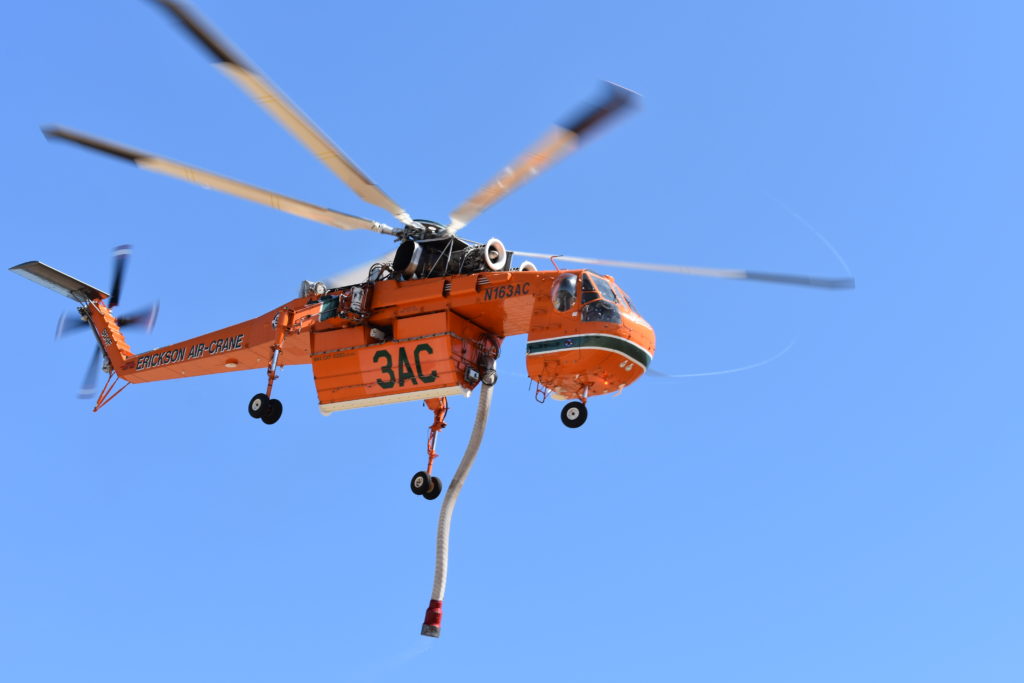Keeping The Birds In The Air
By Mandy Langfield | June 1, 2021
New adaptations made to old aircraft ensure longevity and continued use in aerial firefighting fleets around the world. While new aircraft are being built for use in aerial firefighting roles, certification is some years away. Until then, aviators are reliant upon upgrades and adaptations to older aircraft to fight fires from the air. Below is a round-up of some of the most commonly used variants being put to work as aerial firefighting aircraft.

Erickson S-64
The Erickson S-64 Air Crane has been in operation for over 50 years, and has done sterling service throughout that time. The latest generation of the S-64, known as the S-64F+, is expected to be introduced by 2024, and will offer users a multitude of new features and technology.
A company spokesperson told AirMed&Rescue: “Erickson Incorporated is investing in new engines, Sikorsky’s MATRIX™ Technology for fly-by-wire autonomous flights, an enhanced water cannon, and composite main rotor blades. These four investments will revolutionize and modernize this vehicle for the future of aerial missions.”
The new engine will have multiple benefits, including a 30-per-cent fuel cost saving compared to the legacy engine, and improved performance in hot and high environments. The new digital control system – MATRIX – also serves to increase the safety of aerial firefighting operations by enhancing pilot situational awareness, even in reduced visibility, as well as reducing lifecycle and operating costs for users.
The spokesperson commented: “MATRIX™ Technology will increase safety and mission success. Flights that are pilot-optional via fly-by-wire technology will allow for flight in degraded visual environments (DVE) like wind and sandstorms. In military operations, it will also allow for the recovery of unmanned systems and increased cargo transport.” In fact, the aircraft, in an optionally piloted capacity, is now being considered for nighttime aerial firefighting, which will dramatically decrease the loss of life and property in wildfires.
Erickson’s new water cannon can tackle difficult urban high-rise firefighting demands, and will also provide enhanced precision for wildland firefighting. Finally, the new composite rotor blades, which have just been approved by the Federal Aviation Administration, offer an 88-per-cent increase in payload compared to metal blades, and have the capacity to extend aircraft performance.
From AirMed&Rescue

